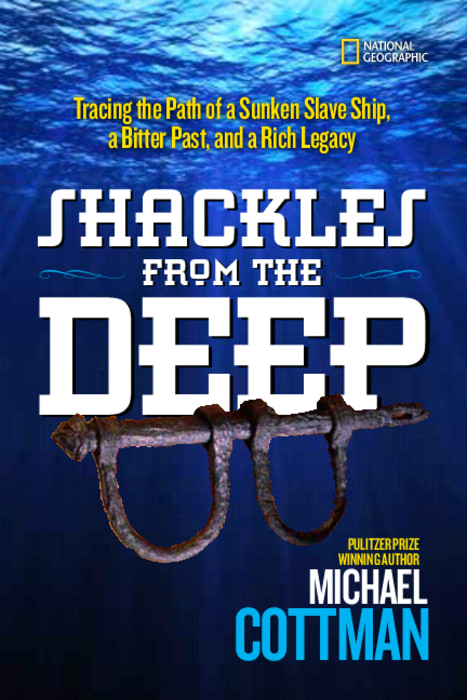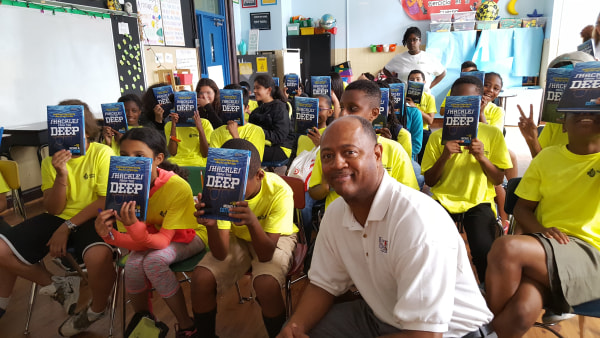According to NBC, Michael Cottman always had a fascination with underwater adventures. While looking for ways to combine his passion for deep sea diving with his career as a journalist, Cottman came across the the incredible story of the Henrietta Marie.
The Henrietta Marie is a recovered slave ship Cottman was fortunate enough to explore as part of the National Association of Black Scuba Divers. His interest piqued by his dive, Cottman began to research the ship; his quest for information would take him across several continents in the early '90s.
This journey eventually became his 1998 book, The Wreck of the Henrietta Marie: An African American’s Spiritual Journey to Uncover a Sunken Slave Ship.
Almost two decades later, Cottman is revisiting his narrative with the release of a young adult version through National Geographic called Shackles from the Deep: Tracing the Path of a Sunken Slave Ship, a Bitter Past, and a Rich Legacy.

Before shipwrecking near Key West in 1700, researcher believe that the Henrietta Marie dropped off 250 kidnapped Africans in Carlisle Bay, Barbados and 190 in Port Royal, Jamaica.
It wasn’t until 1972 when black Panamanian underwater treasure hunter Moe Molinar took note of shackles and a cannon from a ship that the contemporary Henrietta Marie story began. Other divers had encountered the ship before Molinar but their focus was on monetary treasures, not on history.
Historical research into the ship really began in 1983, when marine archaeologist David Moore discovered the watch bell from the ship, identifying it as the Henrietta Marie. This discovery led to more exploratory dives, including some with black divers. In the 1990s, Cottman got in on the work.
“I thought it was important for young people to know about the African slave trade, but also to know the African genius that was brought to these shores by African people through mathematics and science and poetry, culture and music, and that there’s still an uplifting element to this story because we’ve survived and excelled,” Cottman said.
Cottman believes that the story of the Henrietta Marie still resonates.
“I wanted them to know that this book is timely [in] this current racial and political climate because it teaches these young readers to understand and appreciate cultural differences — because we’re living and interacting in this ever-expanding multicultural society,” Cottman said.

Cottman went on a book tour at the beginning of the year that placed him in front of about 1,500 youth of various racial and ethnic backgrounds across five states. Cottman also shared images of the the artifacts such as shackles, pewter ware and mugs used by slave ship captains, and trading beads with the students.
“What I am hoping with this book is that it gives young readers an opportunity to learn and understand the history of slavery through one slave ship, the Henrietta Marie,” Cottman explained. “There’s no better illustration for racial partnership to me than introducing, in the book and in my lectures, the partnership of the National Association of Black Scuba Divers and the white marine archeologists we worked with to explore the Henrietta Marie.”

